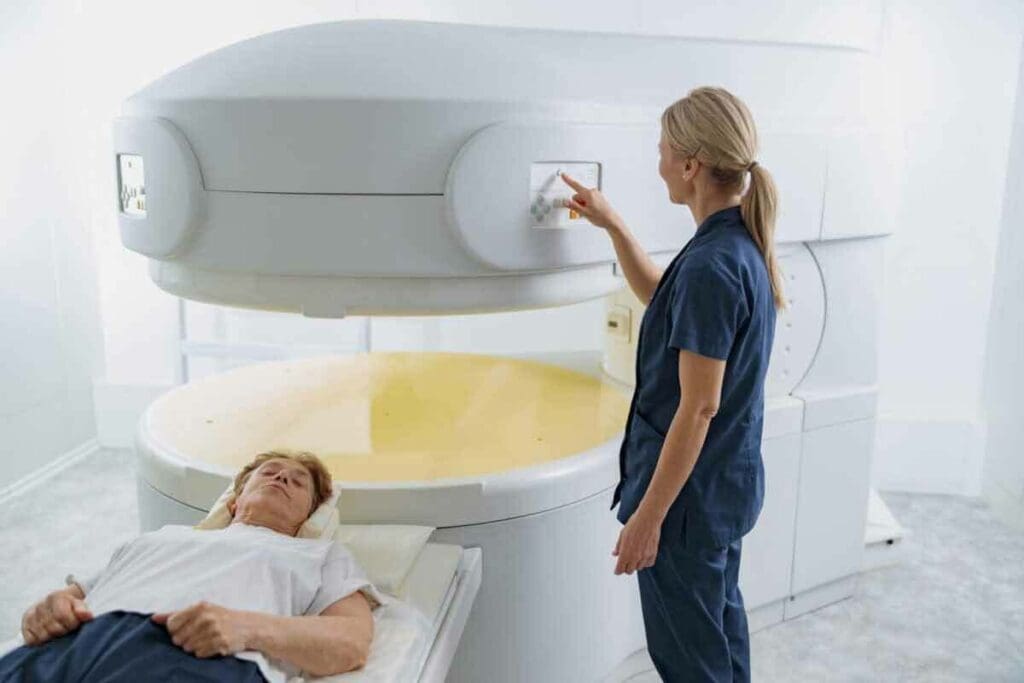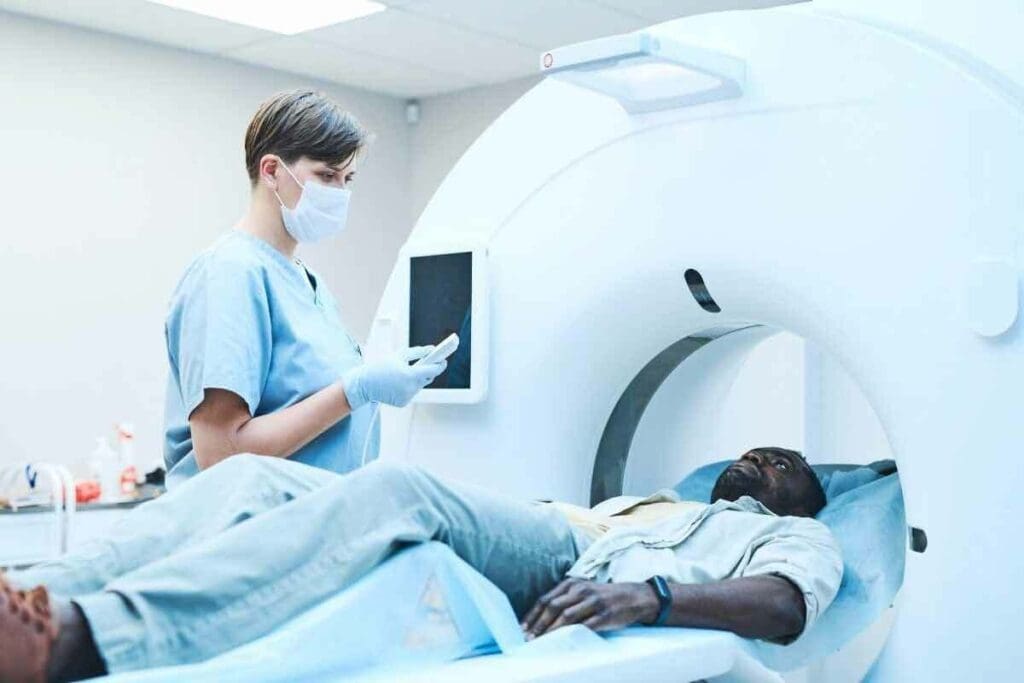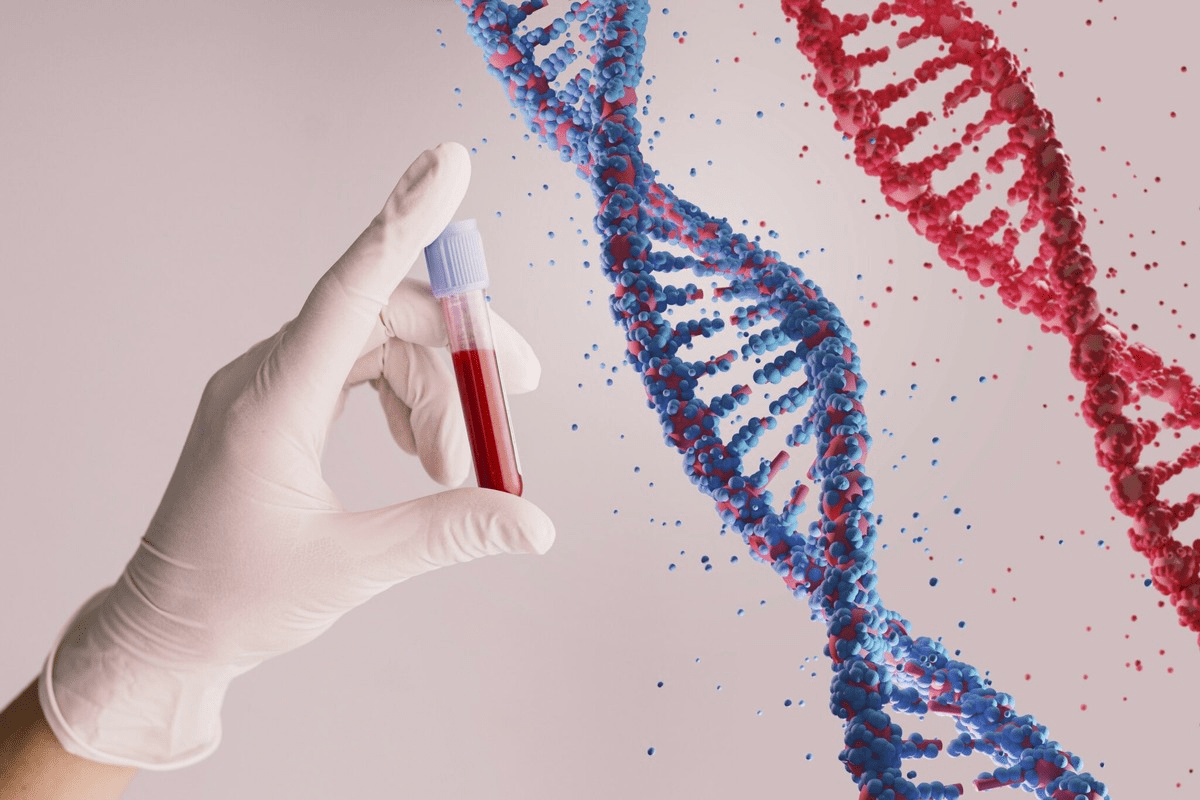Last Updated on November 27, 2025 by Bilal Hasdemir

Choosing the right imaging test is key for accurate diagnosis and effective treatment. At Liv Hospital, we aim for international standards and patient-centered care. Understanding the differences between PET scan vs CT scan vs MRI helps you take charge of your health.
There are many imaging options, making it hard to choose the right one. Our team of experts is here to help you. We ensure you get the best care by understanding each test’s strengths and uses.
Key Takeaways
- Understand the key differences between MRI, CT, and PET scans.
- Learn about the unique strengths and applications of each imaging modality.
- Discover how Liv Hospital’s expertise can guide you through the diagnostic process.
- Find out how the right imaging test can lead to accurate diagnosis and effective treatment.
- Empower yourself to engage confidently in your care.
The Fundamentals of Medical Imaging

Modern medical imaging, like MRI, CT, and PET scans, is key in today’s medicine. These tools give doctors deep insights into our bodies. We’ll look at how these imaging methods work, their history, and their role in health care.
The Evolution of Diagnostic Imaging
Diagnostic imaging has changed a lot over time. It started with X-rays and now we have advanced MRI, CT, and PET scans. These new technologies have greatly improved how doctors diagnose and treat diseases.
New imaging tools were made to give doctors better information. For example, PET scans show how cells work, while MRI gives clear pictures of soft tissues.
The Role of Imaging in Modern Medicine
Medical imaging is very important in today’s health care. It helps doctors find and treat many diseases, like cancer and heart problems.
- Diagnostic Accuracy: Imaging helps doctors make accurate diagnoses, which guides treatment.
- Treatment Planning: Detailed images help plan and perform precise treatments.
- Monitoring Progress: Imaging lets doctors check how well treatments are working and if the disease is getting worse.
In summary, MRI, CT, and PET scans are essential in today’s medicine. Knowing about these technologies is important for both doctors and patients.
What is an MRI Scan?

MRI technology uses strong magnetic fields and radio waves to create detailed images of the body’s inside. It’s a non-invasive method that has changed medicine. It lets doctors see inside the body without surgery or harmful radiation.
How Magnetic Resonance Imaging Works
MRI scans align hydrogen atoms in the body with a strong magnetic field. Then, radio waves disturb these atoms, creating signals. The MRI machine picks up these signals to make detailed images of the body’s inside.
A key advantage of MRI is its ability to provide high-contrast images of soft tissues. This is great for looking at the brain, spinal cord, and muscles. MRI is safe because it doesn’t use harmful radiation, making it good for patients who need many scans.
Common Applications of MRI
MRI is used to find and track many medical conditions. It’s good for looking at the brain, muscles, and some cancers. Its detailed images of soft tissues are very helpful.
- Diagnosing conditions such as multiple sclerosis and spinal cord injuries
- Evaluating musculoskeletal injuries, such as torn ligaments and meniscal tears
- Monitoring the progression of certain cancers and assessing the effectiveness of treatment
Medical experts say MRI is a key tool in modern medicine. It gives deep insights into the body’s inside. This is why MRI is so valued in the medical field.
“The development of MRI has revolutionized the field of diagnostic medicine, enabling healthcare providers to diagnose and treat medical conditions with greater accuracy and precision.”
Says a diagnostic radiology expert.
| Imaging Technique | Primary Use | Radiation Exposure |
| MRI | Soft tissue imaging, neurological disorders | No |
| CT Scan | Bone structures, emergency situations | Yes |
| PET Scan | Metabolic activity, cancer staging | Yes |
In conclusion, MRI scans are a powerful tool for doctors. They provide detailed images without harmful radiation. MRI is key in diagnosing and tracking many medical conditions, making it vital in today’s medicine.
What is a CT Scan?
A CT scan is a high-tech tool that makes detailed images of the body using X-rays. It helps doctors see inside the body to diagnose and treat many health issues.
The Technology Behind Computed Tomography
CT scans combine X-rays and computers to show the body’s inside parts. An X-ray machine moves around the body to gather data. Then, this data is turned into clear images.
When CT Scans Are Typically Used
CT scans are key in emergencies to quickly check for injuries or find problems like bleeding, breaks, or tumors. They also help guide biopsies and other procedures.
| Imaging Modality | Typical Use | Radiation Exposure |
| CT Scan | Emergency situations, cancer staging, guiding interventions | Yes |
| MRI | Soft tissue imaging, neurological disorders | No |
| PET Scan | Cancer diagnosis, monitoring treatment response | Yes |
For a visual understanding of how CT scans work, consider the following image:
To learn more about the differences between CT scans, MRI, and PET scans, PET.
What is a PET Scan?
A PET scan is a powerful tool for doctors. It shows how different parts of the body work. Unlike other scans, it focuses on how active each area is.
PET scans use a special tracer that lights up active areas. This tracer is given through an IV and goes to places with lots of activity, like cancer cells.
Understanding Positron Emission Tomography
Positron Emission Tomography (PET) detects the energy from the tracer. When it decays, it sends out positrons that meet electrons, making gamma rays. The PET scanner catches these rays to make detailed images of the body’s activity.
The info from a PET scan is key for diagnosing and managing diseases, like cancer. It shows how far a disease has spread, if treatment is working, and if it’s coming back.
Key Applications of PET Scanning
PET scans are used in many ways in medicine. Some main uses are:
- Cancer diagnosis and staging: PET scans show how far cancer has spread and help decide treatment.
- Monitoring treatment response: They check if a treatment is working by looking at metabolic changes.
- Detecting recurrence: They find cancer coming back sooner than other scans.
- Neurological disorders: They help diagnose and manage diseases like Alzheimer’s and epilepsy.
- Cardiovascular disease: They check heart function and find areas with low blood flow.
When comparing PET scans to CT and MRI, each has its own benefits. For example, pet ct vs mri, PET/CT combines metabolic info from PET with CT’s detailed images. This gives a full view that MRI might not.
The choice between pet scan vs ct vs mri depends on what the doctor needs to know. CT scans are great for detailed images, MRI for soft tissue contrast. But PET scans give unique metabolic insights that are vital for diagnosing and managing some conditions.
In summary, knowing how PET scans work is key to understanding their importance in medicine. As we learn more about different imaging methods, we see that the right scan depends on the patient’s needs and the situation.
PET Scan vs CT Scan vs MRI: Core Differences
MRI, CT, and PET scans are three different ways to see inside the body. Each has its own way of working, benefits, and uses. Knowing these differences helps doctors make the right diagnosis and treatment plans.
Imaging Principles Comparison
The main difference between MRI, CT, and PET scans is how they work. MRI uses magnetic fields and radio waves to show soft tissues in detail. CT scans use X-rays to make images of bones, lungs, and other organs. PET scans use small amounts of radioactive tracers to see how tissues work, which is great for finding cancer and brain problems.
Visualization Capabilities
Each scan can show different things. MRI is best for soft tissues like the brain and spine. CT scans are better for bones and finding injuries. PET scans show how tissues work, helping find cancer.
Clinical Decision-Making Factors
Doctors choose scans based on what they need to see and the patient’s health. MRI is good for the brain because it’s safe and detailed. CT scans are fast and good for emergencies. PET scans help track cancer and how treatments work.
Knowing the differences helps doctors pick the best scan for each patient. This ensures the right care for everyone.
Difference #1: Radiation Exposure and Safety
Medical imaging uses different methods to see inside the body. It’s important to know how much radiation each method uses. This helps keep patients safe. We’ll look at how MRI, CT, and PET scans compare in terms of radiation.
Radiation Levels in CT and PET Scans
CT scans use X-rays to make detailed images. The amount of radiation from a CT scan depends on the procedure and body part. CT scans usually have more radiation than regular X-rays. PET scans use small amounts of radioactive tracers. They have less radiation than CT scans but are not zero.
Here’s a comparison of the effective doses for common imaging procedures:
| Imaging Modality | Typical Effective Dose (mSv) |
| Chest X-ray | 0.1 |
| CT Abdomen/Pelvis | 10-20 |
| PET Scan (18F-FDG) | 5-7 |
MRI as a Radiation-Free Alternative
MRI is special because it doesn’t use radiation. It uses strong magnetic fields and radio waves to create images. This makes MRI a good choice for people who need many scans or are worried about radiation, like pregnant women and kids.
Safety Considerations for Each Modality
MRI doesn’t use radiation, but it has its own safety issues. These include claustrophobia and risks from metal objects. CT scans use X-rays, which means they have radiation risks. This is a big concern for kids and for scans that use a lot of radiation. PET scans use radioactive materials, which need careful handling to protect everyone involved.
Safety Considerations Summary:
- MRI: No radiation, but may cause claustrophobia and metal risks.
- CT Scan: Uses X-ray radiation; higher doses for certain procedures.
- PET Scan: Uses radioactive tracers; lower radiation than CT but a concern.
Knowing these differences helps make better choices for medical imaging. By looking at the radiation and safety of MRI, CT, and PET scans, doctors can pick the best option for each patient.
Difference #2: Tissue Contrast and Detail Resolution
Tissue contrast and detail resolution are key factors that differentiate MRI, CT, and PET scans in clinical practice. Each modality has its strengths, making it more suitable for specific diagnostic tasks.
MRI’s Superiority for Soft Tissue Imaging
Magnetic Resonance Imaging (MRI) excels in providing high-resolution images of soft tissues. Its ability to distinguish between various soft tissue types is unparalleled, making it an invaluable tool for diagnosing conditions affecting the brain, spinal cord, and musculoskeletal system. For instance, MRI is often the preferred choice for detecting tumors, inflammation, and other abnormalities in soft tissues.
CT’s Advantage for Bone Structures
Computed Tomography (CT) scans, on the other hand, are adept at imaging bone structures and detecting calcifications. CT scans provide excellent detail of bony anatomy, which is key for diagnosing fractures, bone degeneration, and certain bone infections. The speed and clarity of CT scans make them ideal for emergency situations where quick assessment is necessary.
PET’s Unique Metabolic Insights
Positron Emission Tomography (PET) scans offer a different kind of information, focusing on the metabolic activity within tissues. PET scans are very useful in oncology, helping assess the metabolic activity of tumors. This aids in cancer staging and monitoring treatment response. For more detailed information on how PET scans compare to other modalities like CT and MRI,
In summary, the choice between MRI, CT, and PET scans depends on the specific diagnostic task. It includes the need for soft tissue detail, bone structure clarity, or metabolic information. Understanding these differences is key for healthcare providers to make informed decisions.
Difference #3: Speed and Patient Experience
The experience of getting an MRI, CT, or PET scan is different for everyone. This is because of how long the scan takes and how comfortable each person feels. Knowing these differences helps doctors and nurses meet patient needs and make the process smoother.
Duration of Each Scanning Procedure
CT scans are the fastest, taking just a few minutes. MRI scans can last from 15 to 90 minutes, depending on the scan’s complexity and the body part being checked. PET scans usually take 30 to 60 minutes, but getting ready for them can take hours.
- CT scans: Usually 1-5 minutes
- MRI scans: Typically 15-90 minutes
- PET scans: Generally 30-60 minutes, with preparation
Patient Comfort Considerations
How comfortable a patient feels during a scan is very important. MRI scans can be hard because of the closed scanner and staying very quiet for a long time. CT scans are more comfortable because they’re quicker and the machine is open. PET scans are similar to CT scans but include an injection of radioactive tracer, which some find uncomfortable.
To make patients more comfortable, doctors and nurses use different methods, such as:
- Using open MRI machines for claustrophobic patients
- Providing earplugs or headphones to reduce noise
- Administering mild sedation if necessary
Claustrophobia and Movement Issues
Claustrophobia is a big problem for MRI scans because of the closed scanner. Patients with severe claustrophobia might need sedation or other imaging options. MRI and PET scans need patients to stay very quiet for a long time. Ways to help include:
- Using comfortable positioning aids
- Providing clear instructions to patients
- Employing sedation when necessary
Understanding the differences in scan time, comfort, and issues with claustrophobia and movement helps doctors and nurses prepare patients better. This makes the diagnostic process better for everyone.
Difference #4: Cost and Accessibility Factors
It’s important to know the cost and accessibility of MRI, CT, and PET scans. These costs can change a lot. They depend on the technology, how complex the procedure is, and where you are.
Comparing Procedure Costs
CT scans are usually cheaper than MRI and PET scans. A CT scan in the U.S. can cost between $300 and $5,000. This price can change based on the body part scanned and if contrast material is used.
MRI scans cost more, from $1,000 to $3,500 or more. This is because MRI technology is complex and needs special facilities.
PET scans, used a lot in cancer care, are the most expensive. They can cost from $1,000 to $5,000 or more. This is because they need a cyclotron to make the radioactive tracer and are complex procedures.
Insurance Coverage Considerations
Insurance coverage is key for getting these scans. Most plans cover CT, MRI, and PET scans when they’re needed. But, how much coverage you get can differ a lot.
For some scans, like PET scans, you might need pre-approval. This is often needed for scans used for specific conditions like cancer.
- Check your insurance policy for coverage details.
- Understand the out-of-pocket costs, including deductibles and co-pays.
- Verify if your insurance requires pre-approval for the scan.
Availability of Different Scanning Technologies
Where you can get MRI, CT, and PET scans can vary. Big hospitals and diagnostic centers usually have all three. But, smaller or rural places might not have them all, or might not have PET scans.
How easy it is to get an appointment can also vary. In some places, you might have to travel far to get certain scans. This is because of wait times and the need for specialized staff.
We know that cost and how easy it is to get these scans are important. By understanding these differences, we can make better choices about our health care.
Difference #5: Hybrid Imaging Technologies
Hybrid imaging technologies like PET/CT and PET/MRI are changing medicine. They combine different imaging methods. This gives doctors a better view of complex health issues, helping them make accurate diagnoses and choose the right treatments.
PET/CT Combined Advantages
PET/CT scanners mix PET and CT scans. They show how the body works and its structure. This is very helpful in oncology for finding cancer and checking how treatments work. Studies show PET/CT is more accurate than PET or CT alone in some cases.
PET/CT scans give a full picture of tumor activity and location. This helps doctors create treatment plans that fit each patient’s needs.
PET/MRI Applications and Benefits
PET/MRI combines PET’s metabolic info with MRI’s soft tissue detail. It’s great for brain and muscle studies, giving clear views of function and structure.
PET/MRI is better for patients needing less radiation, like kids or those needing many scans. It also shows soft tissues better, which is key for diagnosing and tracking brain, liver, and other soft tissue issues.
Future Directions in Hybrid Imaging
Hybrid imaging is getting better, with new scanner designs and image tech. These updates will make PET/CT and PET/MRI even more useful, opening up new areas for use.
Future studies will aim to improve hybrid imaging. They’ll work on better image quality and new uses in medicine. New tracers and techniques will also boost hybrid imaging’s role in healthcare.
Difference #6: Diagnostic Accuracy in Cancer Detection
PET, CT, and MRI scans are key in finding cancer. They help doctors know how serious the cancer is. This info is vital for choosing the right treatment.
It’s important to know what each scan is good at. This helps doctors pick the best one for each patient.
Which is More Accurate: PET Scan or CT Scan?
PET scans are great at spotting cancer because they show how cells are working. CT scans, on the other hand, are better at showing the body’s structure. Together, PET/CT scans can give a clearer picture.
This combo is often the best choice. It helps doctors see both how the body is working and its structure. This is very helpful in complex cases.
MRI’s Role in Cancer Diagnosis
MRI scans are very useful for some cancers. They show soft tissues very clearly. This is great for checking tumors in places like the brain and spine.
Even though MRI isn’t always the first choice, it’s often used with other scans. This gives a fuller picture of the cancer.
Choosing the Right Scan for Cancer Staging
Choosing the right scan for cancer staging depends on many things. The type and location of the cancer, and how far it has spread, are key. PET/CT scans are often used because they show both how the body is working and its structure.
The right scan for a patient depends on their cancer and what the doctors need to know. This helps in planning the best treatment.
Understanding what each scan can do helps doctors make better choices. This leads to better care for patients.
Difference #7: Clinical Applications and Specialization
It’s key for healthcare pros to know how MRI, CT, and PET scans work. This knowledge helps them pick the right imaging for each patient. The choice depends on the patient’s condition and what info is needed for care.
Neurological Disorders: MRI vs CT vs PET
Each scan has its own role in diagnosing brain and spinal issues. MRI is top for brain and spinal cord details, great for spotting conditions like multiple sclerosis and brain tumors. CT scans are fast for emergency checks, like finding bleeding or breaks. PET scans help see brain activity, helping with diseases like Alzheimer’s.
For stroke, CT scans are first because they’re quick. But MRI gives more detail on the stroke’s extent. PET scans show brain activity, key for some conditions.
Cardiovascular Conditions: Optimal Imaging Choices
For heart issues, the right scan depends on what’s being checked. CT scans are best for coronary artery disease, showing artery details and calcification. MRI checks heart function and blood vessels without radiation.
PET scans are key for heart blood flow and tissue health. This info helps decide treatment for heart disease or failure.
Oncology Applications: Tailoring the Imaging Approach
In cancer care, picking the right scan is critical. PET/CT combines CT’s body images with PET’s metabolic info, helping spot and stage cancers. MRI is great for soft tissue tumors, showing tumor size and spread.
For lymphoma staging, PET/CT is top for finding active tumors. MRI is used for detailed looks at specific areas, like the spine or brain.
In summary, knowing MRI, CT, and PET’s uses is key for accurate diagnoses and care. Understanding each scan’s strengths helps healthcare pros give better treatment plans.
Conclusion: Making Informed Decisions About Medical Imaging
It’s important to know the differences between MRI, CT, and PET scans. We’ve looked at what each can do well and their limits. MRI doesn’t use radiation, while PET scans show how tissues work.
Choosing between MRI, CT, and PET scans depends on what each patient needs. Doctors consider things like radiation, how well tissues show up, and how accurate the scan is. This helps them pick the best scan for each patient.
Medical imaging is always getting better, with new tech like PET/CT and PET/MRI. Knowing about these advancements helps patients and doctors make better choices. This ensures patients get the best care possible.
FAQ
What is the main difference between MRI, CT, and PET scans?
MRI scans use magnetic fields to show soft tissues clearly. CT scans use X-rays to see internal structures. PET scans use radioactive tracers to show how active cells are in the body.
Which imaging modality is best for soft tissue imaging?
MRI is top for soft tissue imaging. It shows different soft tissues well.
Are CT scans or PET scans more accurate for cancer detection?
CT scans are good for finding tumors and their size. PET scans show how active cancer cells are. The best scan depends on the cancer type and situation.
Do MRI, CT, and PET scans involve radiation exposure?
CT and PET scans use radiation. MRI does not. MRI is safer for those needing many scans or are sensitive to radiation.
How long do MRI, CT, and PET scans typically take?
MRI scans last 15 to 90 minutes. CT scans are quick, taking just a few minutes. PET scans take 30 minutes to several hours, including prep and scan time.
Can I undergo an MRI scan if I have claustrophobia?
Modern MRI machines are designed to help those with claustrophobia. Open or wide-bore machines are available. Sedation or relaxation techniques can also help.
Are hybrid imaging technologies like PET/CT and PET/MRI available?
Yes, PET/CT and PET/MRI are available in many places. They combine different imaging to give better diagnoses.
How do I choose the right imaging modality for my condition?
Choosing depends on your condition, medical history, and situation. Always talk to a healthcare professional to find the best option.
Are there any differences in cost between MRI, CT, and PET scans?
Costs vary a lot. MRI and PET scans are usually pricier than CT scans. Insurance and technology availability also affect costs.
Can I undergo a PET scan if I have diabetes?
If you have diabetes, special care is needed before a PET scan. Tell your doctor about your diabetes and follow their prep instructions.
References
Veit-Haibach, P., et al. (2023). International EANM-SNMMI-ISMRM consensus on PET/MRI acquisition protocols in oncology. https://pmc.ncbi.nlm.nih.gov/articles/PMC10547645/






